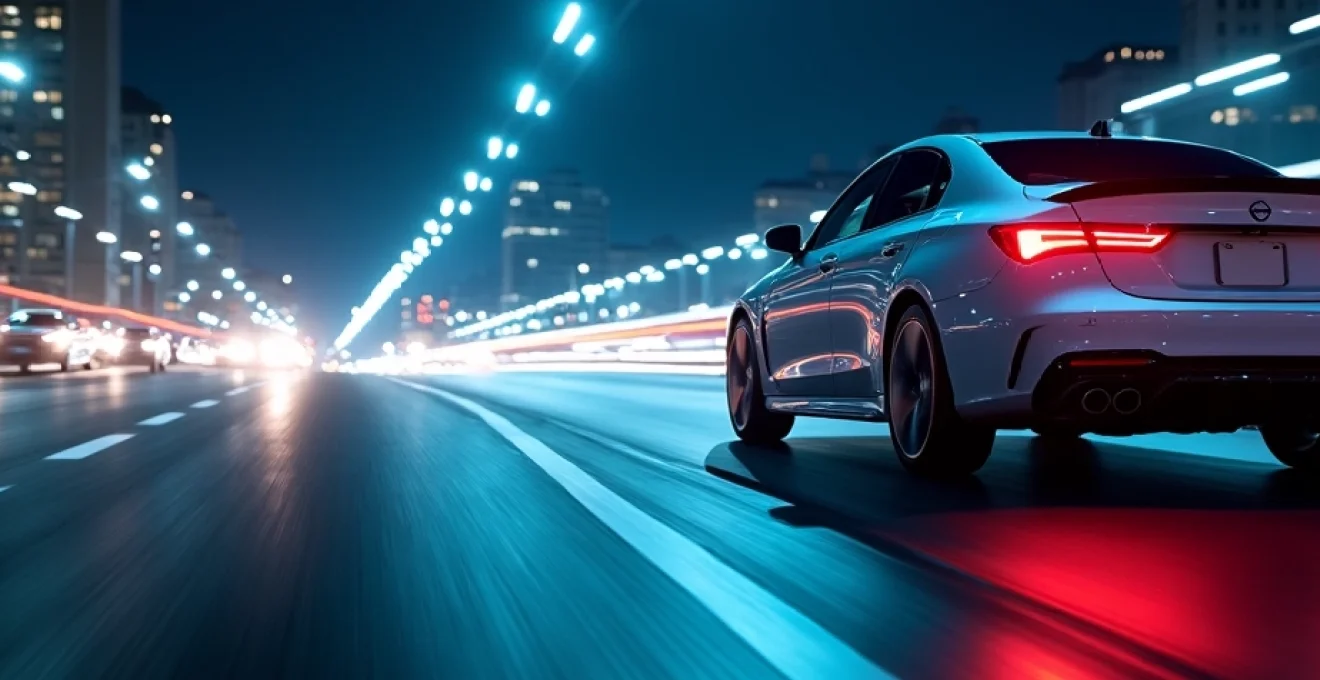
Reversing cameras have revolutionized automotive safety, transforming the way drivers navigate their vehicles in reverse. As an integral component of modern car technology, these cameras significantly reduce the risk of accidents and injuries associated with backing up. The evolution of reversing camera systems has been rapid, with advancements in image processing, sensor integration, and artificial intelligence pushing the boundaries of what's possible in vehicle safety.
Evolution of reversing camera technology in automotive safety
The journey of reversing cameras from a luxury feature to a standard safety component is a testament to their effectiveness in preventing accidents. Initially introduced in high-end vehicles, these cameras have become ubiquitous across all vehicle segments, driven by consumer demand and regulatory requirements. Early reversing cameras were simple devices that provided a basic view of the area behind the vehicle. However, as technology progressed, manufacturers began incorporating more sophisticated features. The introduction of wide-angle lenses dramatically improved the field of view, while advancements in display technology enhanced image clarity and resolution. One of the most significant milestones in the evolution of reversing cameras was the integration of guidelines on the display. These dynamic lines, which adjust based on steering input, provide drivers with a visual reference for their vehicle's projected path, making parking and maneuvering in tight spaces considerably easier and safer.Operational principles of modern reversing camera systems
Modern reversing camera systems are complex devices that rely on a combination of hardware and software to provide drivers with real-time, actionable information. Understanding the operational principles behind these systems is crucial for appreciating their role in enhancing vehicle safety.Wide-angle lens technology and field of view optimization
At the heart of every reversing camera is a wide-angle lens designed to capture as much of the area behind the vehicle as possible. These lenses typically offer a field of view ranging from 130 to 180 degrees, significantly surpassing what drivers can see using traditional mirrors. The wide-angle view is crucial for detecting obstacles or pedestrians that might otherwise be hidden in blind spots. To optimize the field of view, manufacturers carefully calibrate the lens and camera positioning. This calibration ensures that the camera captures the most relevant area behind the vehicle, including the ground immediately behind the rear bumper and a sufficient distance to allow for safe maneuvering.Image processing algorithms for obstacle detection
Raw footage from the camera is processed in real-time using sophisticated algorithms. These algorithms enhance image quality, adjust for lighting conditions, and can even detect and highlight potential obstacles. Some advanced systems use machine learning algorithms to improve obstacle detection accuracy over time, learning from various scenarios encountered during regular use. The processed image is then displayed on the vehicle's infotainment screen or a dedicated monitor, providing the driver with a clear, easy-to-interpret view of the rear environment. Many systems also overlay helpful information on the display, such as distance markers or warning indicators for detected obstacles.Integration with ultrasonic sensors for enhanced accuracy
To further improve accuracy and reliability, many modern reversing camera systems are integrated with ultrasonic sensors. These sensors emit high-frequency sound waves that bounce off objects behind the vehicle, providing precise distance measurements. The combination of visual data from the camera and distance information from the sensors offers a comprehensive safety system. This integration allows for features like automatic braking if an obstacle is detected too close to the vehicle, adding an extra layer of safety beyond what the camera alone can provide. The synergy between visual and sonic data significantly reduces the risk of collisions during reversing maneuvers.Night vision capabilities: infrared and low-light imaging
Recognizing that many accidents occur in low-light conditions, manufacturers have incorporated night vision capabilities into reversing camera systems. Infrared technology allows these cameras to "see" in near-total darkness, providing clear images even when there's minimal ambient light. Advanced low-light imaging sensors can amplify available light, producing surprisingly clear images in conditions that would challenge the human eye. This technology is particularly valuable in poorly lit parking garages or when backing up at night, significantly reducing the risk of accidents in these challenging conditions.NHTSA regulations and impact on reversing camera adoption
The widespread adoption of reversing cameras in the United States was significantly accelerated by regulations from the National Highway Traffic Safety Administration (NHTSA). In 2014, NHTSA mandated that all new vehicles under 10,000 pounds sold in the U.S. must be equipped with rearview video systems by May 2018. This regulation was a response to the tragic statistics of backover accidents, particularly those involving children. According to NHTSA data, backover crashes result in an average of 210 fatalities and 15,000 injuries annually in the United States, with children under five accounting for 31% of backover fatalities.The NHTSA mandate has been a game-changer for vehicle safety, making reversing cameras a standard feature rather than a luxury option.The impact of this regulation has been profound. Not only has it ensured that virtually all new vehicles are equipped with this life-saving technology, but it has also spurred innovation in the field. Manufacturers, now required to include reversing cameras, have been incentivized to develop more advanced systems to differentiate their products in a competitive market.